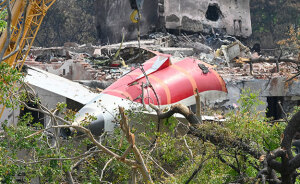
This Is How These 8 Famous Ancient Roman Structures Looked In The Past Vs. Now
Regarded by the world as one of the greatest empires to ever exist, the Roman Empire had many accomplishments that we are thankful for to this day. And Roman architecture is definitely one of them. The living testament to its glory are the constructions that still stand to this day, despite around 2000 years of fire, war, wear and scavenging people. It's hard to imagine modern day Rome without the Colosseum despite the fact that it stood to see the Empire rise and fall, hundreds of generations and cultures come and go. It always was and will be one of the greatest symbols of the Roman Empire. Yet while we see what is left in our day, it is always fascinating to see what the iconic structures looked like back in their glorious days. So scroll down below and check out these comparisons.
This post may include affiliate links.
Colosseum
What could be described as Rome's signature structure, the Colosseum still stands as a breathtaking historical site, despite being around 2000 years old. The amphitheater, back in its glory, could hold an estimated number of 50,000 - 80,000 spectators. And people had a good reason to gather within the premises as the Flavian Amphitheater offered such entertainment as gladiatorial contests, mock sea battles, animal hunts, executions, re-enactments of famous battles, and dramas based on mythology. Nowadays the Coliseum is one of Rome's most popular tourist attractions, despite being damaged by earthquakes and stone-robbers over time. In 2007, New7Wonders Foundation chose the amazing architecture structure as one of the seven New7Wonders of the World.
Roman Forum
Located at the heart of the city of Rome, the Roman Forum is a a rectangular plaza surrounded by the ruins of several important ancient government buildings and filled with interesting history. At the height of the Empire glory, the site was the venue for public speeches, criminal trials, and gladiatorial matches as well as the commercial hub. In later time, the site was the perfect spot for many artists and architects studying in Rome to sketch during the 17th through the 19th century. Nowadays, the Forum is a tourist attraction showcasing the ruins of some of the most important buildings ancient Rome had.
Circus Maximus
The Circus Maximus was once a chariot-racing stadium and mass entertainment venue. It was the perfect place for ludi, public games held for the benefit and entertainment of the Roman people, which often lined up with various Roman religious festivals. Measuring 621 m (2,037 ft) in length and 118 m (387 ft) in width, it was the first and largest stadium in ancient Rome and the later Empire. It could house an impressive audience of over 150,000 spectators. Thousands of years later, Circus Maximus is now a public park.
Temple Of Saturn
Dedicated to the god Saturn, the Temple was built in 497 BC under Tarquinius Superbus, King of Rome. Suffering various disasters, including fire, the temple was destroyed and rebuilt with the present ruins only reflecting the third incarnation of the Temple of Saturn. There is an inscription on the partially preserved pediment that reads "The Senate and People of Rome restored [the temple] consumed by fire."
Temple Of Venus And Roma
Widely believed to once have been the largest temple in Ancient Rome, the Temple of Venus and Roma is located on the Velian Hill, right next to the Colosseum. Constructed in 135 AD, the temple was dedicated to the goddesses Venus Felix ("Venus the Bringer of Good Fortune") and Roma Aeterna ("Eternal Rome"). It is believed that a severe earthquake in the 9th century destroyed the temple. Later, a church was built in its place, ordered by Pope Leo IV. Only a few columns of the old temple remain standing today.
Temple Of Castor And Pollux And Temple Of Caesar
Built in 495 BC to commemorate the victory of the Battle of Lake Regillus, The Temple of Castor and Pollux originally served as the meeting place for the Roman Senate. The temple was dedicated to the Dioscuri, who according to the legend appeared in the battlefield in support of the Republic. Today, only fragments of the temple remain, most apparent of all being the three columns. The Temple of Caesar was erected in 29 BC and dedicated to Julius Caesar posthumously as Caesar was the first resident of Rome to be deified and so honored with a temple.
Theatre Of Marcellus, Temple Of Bellona And Temple Of Apollo Sosianus
Built in 13 BC, the Theatre of Marcellus was used for various performances, like drama and song. Despite its changing use and wear of time, with additional construction through the years, sections of the Theatre survived to this day. Unfortunately, not much was left of the two temples for Roman gods Bellona and Apollo. A notable element of Apollo's temple is the 3 standing columns, although even those belong to the Augustan rebuild.
The Basilica Of Santi Cosma E Damiano
One of the most prominent sights in the Roman Forum, the basilica of Santi Cosma e Damiano is believed to have been commissioned by Emperor Maxentius to honour his son Valerius Romulus, who died in 309. The building was Christianized and dedicated to Sancti Cosma et Damianus in 527. Throughout the years, many restorations helped keep the structure intact which survived to this day and is one of the more popular tourist attractions, with 6th- and 7th-century mosaics displayed in the basilica.
I hope when virtual reality will be common and accessible to all, a lot of places where buildings are collapsed, will use it to "rebuild them" and let visitors walk around and in them in real time too see how they were like. Imagine for example to walk in the colosseum and see all the stairs full of people!
A lot of these buildings aren't still standing because Rome was sacked multiple times throughout history. That means major war and invaders setting stuff on fire and going nuts. The Roman buildings didn't just stand because they were stone and marble. They also had metal in them to keep them upright. When one group of invaders found out about this they knocked a down buildings to get at the metal since it was easier than digging it out of a mountain. Rome had great defenses, but one way to get in was to cut off their access to fresh water until the city had to open its doors for water. - find out more here: https://www.history.com/news/6-infamous-sacks-of-rome
I didn't know they had metal in them. I know they used concrete in Roman times: https://en.wikipedia.org/wiki/Roman_concrete
Load More Replies...I hope when virtual reality will be common and accessible to all, a lot of places where buildings are collapsed, will use it to "rebuild them" and let visitors walk around and in them in real time too see how they were like. Imagine for example to walk in the colosseum and see all the stairs full of people!
A lot of these buildings aren't still standing because Rome was sacked multiple times throughout history. That means major war and invaders setting stuff on fire and going nuts. The Roman buildings didn't just stand because they were stone and marble. They also had metal in them to keep them upright. When one group of invaders found out about this they knocked a down buildings to get at the metal since it was easier than digging it out of a mountain. Rome had great defenses, but one way to get in was to cut off their access to fresh water until the city had to open its doors for water. - find out more here: https://www.history.com/news/6-infamous-sacks-of-rome
I didn't know they had metal in them. I know they used concrete in Roman times: https://en.wikipedia.org/wiki/Roman_concrete
Load More Replies...
 Dark Mode
Dark Mode 

 No fees, cancel anytime
No fees, cancel anytime 




































































